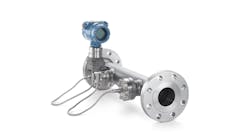|
US MEMBRANE MATERIALS DEMAND (million dollars)
|
|||||
|
% Annual Growth |
|||||
|
Item |
2004 |
2009 |
2014 |
2004- 2009 |
2009- 2014 |
|
|
|
|
|
|
|
|
Membrane Demand |
2135 |
3250 |
4780 |
8.8 |
8.0 |
|
Microfiltration |
1024 |
1420 |
1900 |
6.8 |
6.0 |
|
Reverse Osmosis |
472 |
760 |
1180 |
10.0 |
9.2 |
|
Ultrafiltration |
390 |
645 |
990 |
10.6 |
8.9 |
|
Pervaporation |
57 |
99 |
165 |
11.7 |
10.8 |
|
Other |
192 |
326 |
545 |
11.2 |
10.8 |
|
|
|
|
|
|
|
© 2010 by The Freedonia Group, Inc.
Polymeric membrane materials are predicted to continue to dominate the market because of their relatively low initial costs and applicability to a number of products. Polymer-based membranes are subject to an increasing level of competition from nonpolymeric membranes because of the former’s performance limitations in extreme conditions and a tendency toward biological fouling and clogging. Therefore, demand for nonpolymeric materials, including ceramic, metal and composite types, is expected to record faster growth through 2014, benefiting from better performance in extreme temperatures and greater pH ranges, as well as generally lower maintenance costs.
As the most established and mature segment of the market, microfiltration membranes are projected to continue to account for the largest share of total demand. However, more rapid advances are projected for ultrafiltration and reverse-osmosis membranes, both of which produce higher purity streams. These two segments will also benefit from their ability to highly treat wastewater for re-use and rising interest in brackish water and seawater desalination.
The largest market for membranes is water and wastewater treatment, representing nearly half of sales. Demand is driven by regulations for water and waste streams that increasingly require membrane separation technologies to achieve the mandated results, the rising need for water conservation in many parts of the United States and increasing acceptance of membranes in these markets. These trends particularly affect the municipal and industrial segments. However, the best opportunities for growth will emerge in the chemical processing and pharmaceutical and medical markets, as well as smaller markets, such as fuel cells and environmental treatment and remediation.

